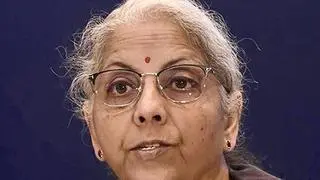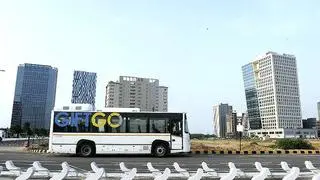India missed the pre-Covid opportunity in pushing up domestic manufacturing of solar gears. Safeguard duty imposed in 2018 did bring temporary relie, but for a more sustainable solution in the post-Covid world, India must consider other options.
As a step in this direction, the country should start with removing the tax barrier for domestic sales by units located in SEZs. This will create a level playing field among domestic manufacturers, paving way for policymakers to take seamless action to promote ‘Make in India’ in this sector.
In 2015, Prime Minister Narendra Modi decided to step up solar generation capacity from 3.7 GW to 100 GW in 2022. The renewable (RES) capacity target was set 4.5 times higher at 175 GW. As of February this year, solar capacity is up by 10 times to 34 GW and RES up by 2.5 times to 87 GW.
Obviously, even at the pre-Covid rate of installation, India would have achieved at least 50 per cent of the solar capacity target. But the government’s intention to tag the opportunity with Make in India didn’t witness as much success. The benefits of India’s huge solar capacity addition went largely to China.
A recent report published by Saur Energy International, which is focussed on the solar sector, points out that at the current rate of installation (6.5 GW annually), India requires nearly $2-billion worth of gears.
However, 90 per of the requirement is met through imports, mostly from China, followed by Malaysia, Vietnam etc. Cost is the major differentiator. Before the imposition of safeguard duty, Chinese solar modules were 15-20 per cent cheaper than locally manufactured gears.
Capacity difference
There are many reasons behind the higher cost of Indian solar gears when compared to China. According to Saibaba Vutukuri, CEO of Vikram Solar, China focussed more on setting up manufacturing capacities than adding generation capacities at home.
The result is visible. As of2018, the world had a capacity to produce nearly 115 GW solar OV cell and module, more than 65 per cent of it was concentrated in China. In comparison, over 200 units in India were producing 3 GW solar PV cells and 8 GW PV modules as of March 2019.
Naturally, China enjoys huge economies of scale. However, that’s not all. Huge amount of state subsidy is directed to the sector, taking advantage of the opaque financial structure. This helps Chinese makers offer easy terms to the solar developers in countries like India.
Whether India is able to put curbs on such imports taking advantage of the post-Covid global consensus against China is to be seen. But Vutukuri says India can do wonders in solar-gear manufacturing, provided the state takes up the right policies, as it did with the auto sector.
Need ecosystem
Curbing imports is definitely important if India wants to promote domestic manufacturing of solar cells and modules. The Modi government indeed had a plan in this direction as it introduced the domestic content requirement (DCR) clause, that suffered an initial jolt at WTO.
It is expected that the government will now impose more stringent measures to ensure that global makers set up factories in India if they want to tap the fast-growing solar market. A few large investments can dramatically change the manufacturing landscape.
Vutukuri says companies like Vikram Solar, which entered solar-gear manufacturing nearly 1.5 decades ago and have been exporting to developed markets, are now capable enough to take the big leap forward with the right policy support.
According to him, nearly half of India’s over 200 solar-gear makers are located in SEZs. They were set up at a time when solar was a rich nation’s choice and export was the prime opportunity. Today, their products attract basic customs duty for domestic sales.
“As such, India has a small capacity when compared to China and then half of it suffers additional hurdle, leaving very little competitive strength behind,” he says.







Comments
Comments have to be in English, and in full sentences. They cannot be abusive or personal. Please abide by our community guidelines for posting your comments.
We have migrated to a new commenting platform. If you are already a registered user of TheHindu Businessline and logged in, you may continue to engage with our articles. If you do not have an account please register and login to post comments. Users can access their older comments by logging into their accounts on Vuukle.